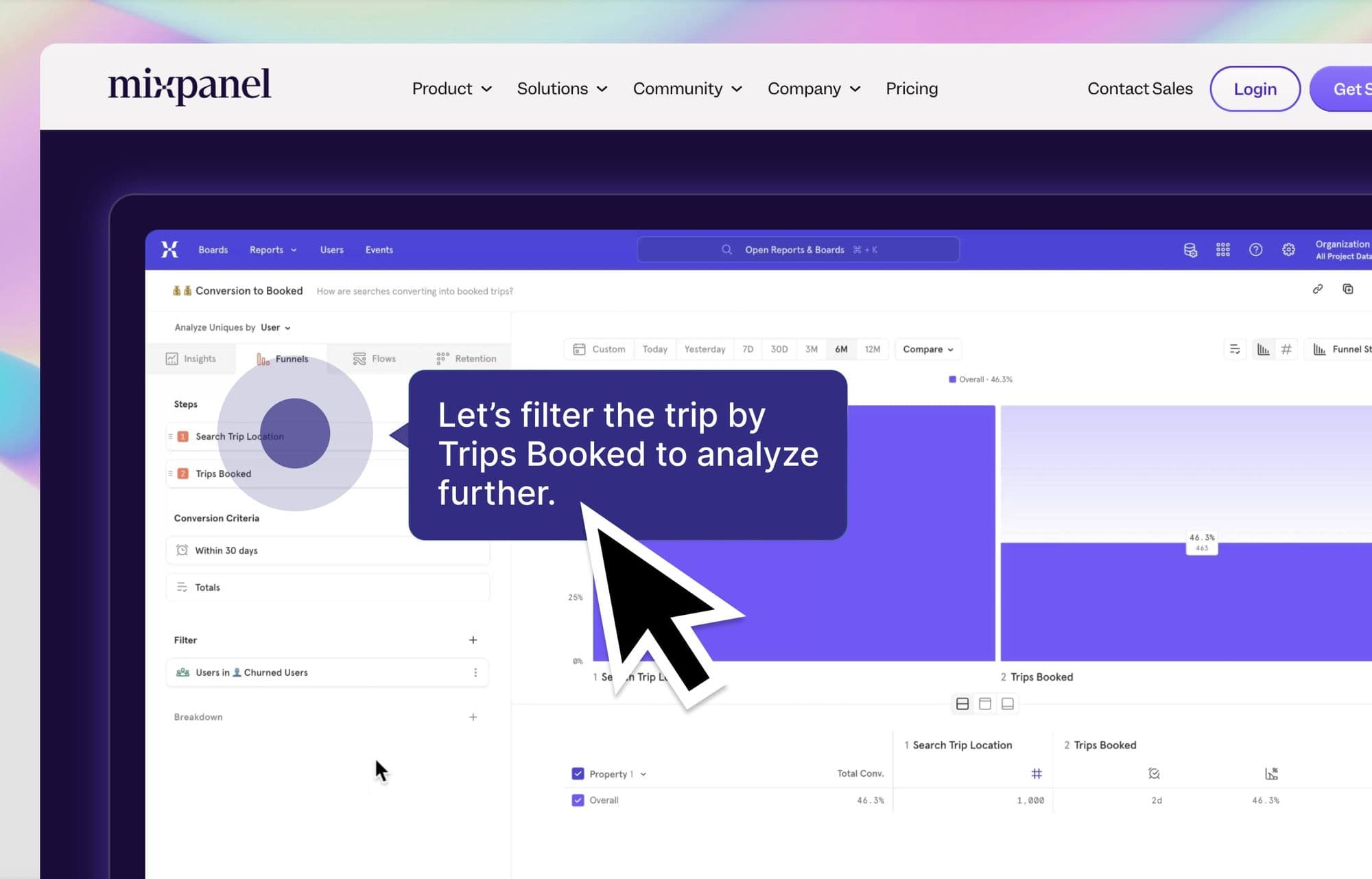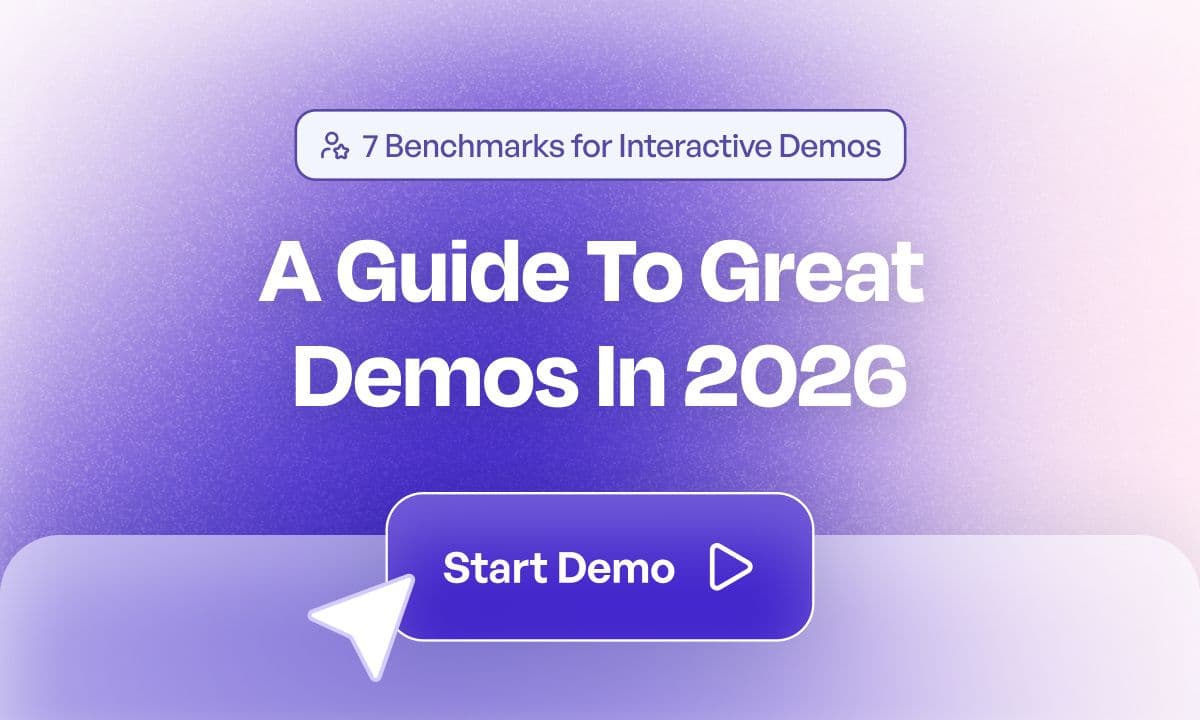
Picture this: You're a solutions engineer who is minutes away from a critical product demo for that dream enterprise prospect. Everything in your sandbox environment worked flawlessly during your practice runs. Your talking points are sharp. You're confident.
Then, right as you begin sharing your screen, your product or demo environment decides to throw a tantrum – features stop working, pages won't load, or worse, you hit an embarrassing error message.
If you've been running sales demos – we've all been there. That sinking feeling when technical issues derail your perfect pitch and potentially cost you a six-figure deal. It's not just frustrating – it's expensive.

Luckily, there's a better way to create safe, reliable, and error-free demo environments. And they're called interactive demos.
In this blog, we'll dive into how modern demo environments are transforming the sales process by eliminating these risks. You'll learn how to deliver consistently impressive product demonstrations that convert prospects into customers, without having to worry about technical surprises that ruin your big moment.
Let's explore how you can stop leaving deals to chance and start running sales demos that close.
What is a sales demo environment?
A demo environment is a controlled space designed specifically for showcasing your product to potential customers. It's a
separate instance of your product
that lets prospects experience your solution instantly, without the friction of signing up or going through a lengthy setup process.
Think of it as a carefully curated stage where users can discover your product's value immediately. Instead of navigating through registration forms and onboarding steps, prospects can jump straight into your product experience and realize its "aha moment" – that crucial point where they understand exactly how your product solves their problems.

Other than accelerating time-to-value, a critical advantage of using a sales demo environment is speed and control.
With isolated, bug-free demo environments, sales teams and solution engineers can demonstrate key features without worrying about technical hiccups, while prospects can explore the product in a tactile, hands-on setting. This accelerates the buyer journey by letting potential customers see and feel the value of your solution within minutes rather than days.
Getting users to quickly experience core features and value can make the difference between winning and losing a deal. Hence, a well-designed demo environment can be a critical sales tool that breaks down barriers and helps prospects make informed decisions faster.
Five key benefits of product demo environments
When utilized correctly, product demo environment can have a plethora of benefits for sales teams and solutions engineers in search of a modern sales process:
1. Stable demo experience
A dedicated demo environment eliminates technical uncertainties that can derail presentations. Sales teams can deliver polished product demos without worrying about unexpected updates, slow loading times, or system crashes – ensuring every prospect gets the best possible product experience.
2. Faster value demonstration
Instead of spending time setting up accounts, speaking in marketing jargon, or explaining theoretical benefits, sales teams can immediately show prospects how the product solves their specific problems. This direct, hands-on experience helps prospects quickly understand the return on investment they could achieve.
3. Personalization at scale

Another key benefit is that sales and solutions engineering teams can maintain multiple demo environments tailored to different industries, use cases, or customer personas.
This allows them to quickly switch between relevant scenarios and customize demonstrations with prospect-specific content, making each presentation feel uniquely relevant. All without having to re-record or recreate multiple sandboxes.
🧐
Did you know?
want to see personalization in how product value is demonstrated.
4. Reduced sales friction
A well-designed demo environment streamlines the evaluation process. Prospects can explore product features independently, understand core functionality faster, and make more informed purchase decisions. This self-guided approach often leads to shorter sales cycles and higher conversion rates.
5. Resource optimization
By having ready-to-use demo environments, sales and presales teams spend less time on technical setup and more time focusing on prospect needs and relationship building.

Furthermore, this efficiency boost can help sales teams handle more product demos and personalize them for each ICP or prospect, all while maintaining quality.
Ultimately, in a crowded market, the ability to deliver smooth, targeted demonstrations that quickly showcase value can be a significant differentiator. A professional demo environment helps build credibility and trust with prospects from the first interaction.
How to create effective demo environments
Creating a demo environment isn't just about cloning and sharing an instance of your product – it's about crafting the perfect stage to showcase your solution's value. Whether you're showing off a new feature or walking prospects through complex workflows, your demo environment needs to be reliable, engaging, and purpose-built for sales success.
Let's explore how to build one that converts prospects into customers.
1. Create a stable replica
Your sandbox demo environment should be a realistic one-to-one replica or clone of your product – but also one that you can control and personalize completely without dependency on the original.
Typically, this means:
- Creating a separate instance of your product
- Pre-loading it with sample data that tells your story
- Ensuring all features work consistently
- Setting up different scenarios for various use cases
Sounds like you might need a lot of technical assistance from your engineering team? Not really. You just need the right sales tech stack – like Supademo's native HTML demo recorder:
Case in point – with Supademo, you can quickly clone your product's frontend (HTML/CSS) with just a few clicks, ensuring a pixel-perfect demo environment that never breaks.
2. Set up multiple environments for different use cases
Hyper-personalization is a sure-shot way to wow your prospects and close deals faster. By leveraging demo automation, you can easily create multiple demo environments from one recorded interactive demo.

Simply use an HTML-based interactive demo template and:
- Create different environments for various industry verticals
- Set up specific instances for different user roles
- Maintain separate environments for different product tiers
- Build specialized demos for key features
- Use dynamic variables to display the prospect's name, company name, etc.
3. Populate with realistic data
Empty or obviously fake data can kill your demo credibility. Your product demo needs to help your prospects experience the true essence of your product to speed up their time-to-value moment. This means:
- Use realistic (but not real) customer information
- Include industry-specific metrics and KPIs
- Create believable user interactions and histories
- Ensure numbers and dates make logical sense
For instance, if you're showing a CRM demo, populate it with company names and deal values that match your prospect's typical business size.
4. Configure for success

Pre-configure your environment to showcase optimal scenarios:
- Set up winning user flows that capture key value moments
- Remove any unnecessary friction points
- Ensure key features are immediately accessible
- Create shortcuts to impressive functionality
"There's extreme value in having the ability to trigger that aha moment with users and showcase the simplicity of our product in just a few clicks" - Justin Berg, Co-founder, Simple Testimonial
You need to ensure everything is strategically placed to tell the best possible story while remaining authentic to the actual product experience.
5. Maintain and update
As you ship new features, update the UX, and improve your product – ensure your demo environment evolves with it:
- Regularly sync with product updates
- Test all features before important demos
- Update sample data periodically
- Add new use cases as they emerge
This ensures your demo environment remains a reliable, powerful sales tool that accurately represents your current product capabilities.
Remember:
The goal of your demo environment is to show the best version of your product in a controlled setting. It should be reliable enough that sales teams can focus on selling, not troubleshooting.
Best practices for perfecting your sales demo environment

Now, let's take a look at a few do's and don't's to help you create the perfect demo environment that helps speed up your sales cycle and wins you more deals.
1. Create with purpose
✅
Do: Design for clarity
• Focus on features that solve specific prospect problems
• Create clear, logical user flows
• Include only relevant data and examples
• Structure demos to highlight key value propositions
❌
Don't: Overwhelm users
• Avoid showcasing
every
product feature
• Skip technical jargon and complex explanations
• Don't overload with unnecessary information
• Keep navigation simple and intuitive
2. Tailor your approach
✅
Do: Personalize experience
• Build separate environments for different industries
• Customize data for specific user roles
• Create persona-specific workflows
• Adapt terminology to match prospect's language
❌
Don't: Use generic content
• Avoid one-size-fits-all demonstrations
• Skip irrelevant features for specific audiences
• Don't use obviously fake or mismatched data
3. Enable self-service
✅
Do: Empower exploration
• Use interactive guided tours like Supademo
• Add helpful tooltips and explanations
• Provide clear navigation paths
• Allow independent feature discovery
❌
Don't: Create barriers
• Avoid requiring downloads or installations
• Skip complicated setup processes
• Eliminate unnecessary login steps
4. Maintain quality and consistency
✅
Do: Keep current
• Regularly update demo environments
• Sync with product updates
• Refresh sample data periodically
Remember: Your demo environment should make it effortless for prospects to see themselves successfully using your product. Keep it simple, relevant, and focused on value.
Create stable, bug-free, and interactive demo environments with Supademo
At Supademo, we want to help companies create better product demos of all types – whether it's multi-step onboarding demos, quick feature-specific product tours, or pixel-perfect copies of your actual product experience.
That's why we're excited to announce that Supademo will soon support HTML-based interactive demo creation, helping you create a pixel-perfect sales environment.
Using Supademo, anyone can create replicas of products for live demos, sales, products tours and more – all in just a few minutes with no code required.

Just use our Chrome extension or desktop app to quickly record your intended product demo. Supademo instantly generates a true-to-life HTML-based interactive demo that allows for extensive post-recording customization, including:
• Easy editing of text, content, data, and images to tailor to specific prospects;
• Usage and integration of dynamic variables to update content
within
the interactive demo;
• Blurring and hiding of sensitive data and/or divs;
• Swapping logos, names, media, and content within the recorded product demo in a one-off or dynamic basis;
FAQs
Commonly asked questions about this topic.
What's the difference between a demo environment and a live product?
A demo environment is a controlled replica of your product designed specifically for sales demonstrations, eliminating technical risks while maintaining full functionality.
Can I use my production environment for demos?
While possible, it's not recommended. Demo environments provide reliability, consistency, and customization options that production environments can't guarantee during sales presentations.
How many demo environments should I maintain?
aintain different environments for key industry verticals, user personas, and use cases. Most companies benefit from 3-5 core demo environments.
How often should I update my demo environment?
Update your demo environment whenever you release major features, change your UI, or add significant functionality to ensure it accurately represents your current product.
What's the best way to personalize demo environments?
Focus on industry-specific data, relevant use cases, and company-specific terminology. Include prospect's branding and scenarios that match their workflow.
What are the key benefits of HTML-based interactive demos?
Some key advantages of HTML-based interactive demos include: (1) providing the most realistic hands-on "try before you buy" experience for prospects, (2) reducing the risk and the need for live sales demo environments, (3) enabling easy customization and updates from one recorded demo, and (4) offering deeper analytics on how users interact with the demo.
Hiba Fathima
Hiba Fathima is the first Product Marketer at Supademo. She previously led product marketing at top Indian tech firms and loves turning complex products into clear, compelling stories.







